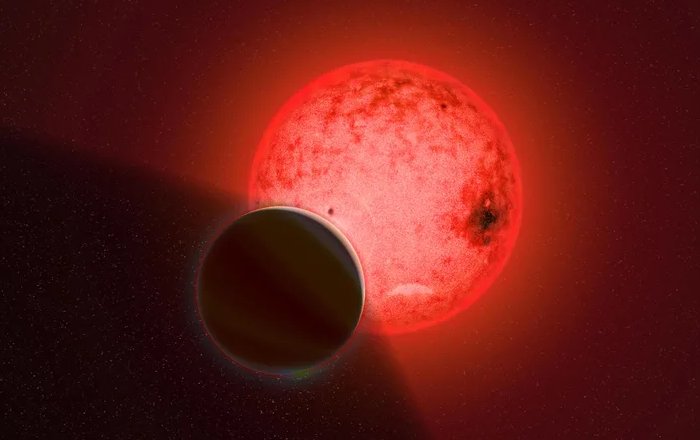Eddie Gonzales Jr. – MessageToEagle.com – Large gas giant planet that orbits a small red dwarf star TOI-5205 has been discovered by a team of astronomers led by Carnegie’s Shubham Kanodia.
This planetary system is unusual, researchers say.
The newly discovered planet — TOI 5205b — was first identified as a potential candidate by NASA’s Transiting Exoplanet Survey Satellite (TESS). Kanodia’s team, which included Carnegie’s Anjali Piette, Alan Boss, Johanna Teske, and John Chambers, then confirmed its planetary nature and characterized it using a variety of ground-based instruments and facilities.
“The host star, TOI-5205, is just about four times the size of Jupiter, yet it has somehow managed to form a Jupiter-sized planet, which is quite surprising!” Kanodia, who specializes in studying these stars, which comprise nearly three-quarters of our galaxy yet can’t be seen with the naked eye, said in a press release.
A small number of gas giants have been discovered orbiting older M dwarf stars. But until now no gas giant has been found in a planetary system around a low-mass M dwarf like TOI-5205. To grasp the size comparison here, a Jupiter-like planet orbiting a Sun-like star could be compared to a pea going around a grapefruit; for TOI-5205b, because the host star is so much smaller, it is more like a pea going around a lemon. In fact, when the Jupiter-mass TOI 5205b crosses in front of its host, it blocks about seven percent of its light — one of the largest known exoplanet transits.
Planets are born in the rotating disk of gas and dust that surrounds young stars. The most commonly used theory of gas planet formation requires about 10 Earth masses of this rocky material to accumulate and form a massive rocky core, after which it rapidly sweeps up large amounts of gas from the neighboring regions of the disk to form the giant planet we see today.
The time frame in which this happens is crucial.
“TOI-5205b’s existence stretches what we know about the disks in which these planets are born,” Kanodia explained. “In the beginning, if there isn’t enough rocky material in the disk to form the initial core, then one cannot form a gas giant planet. And at the end, if the disk evaporates away before the massive core is formed, then one cannot form a gas giant planet. And yet TOI-5205b formed despite these guardrails. Based on our nominal current understanding of planet formation, TOI-5205b should not exist; it is a “forbidden” planet.”
The team demonstrated that the planet’s very large transit depth makes it extremely conducive for future observations with the recently launched JWST, which could shed some light on its atmosphere and offer some additional clues about the mystery of its formation.
Written by Eddie Gonzales Jr. – MessageToEagle.com Staff







